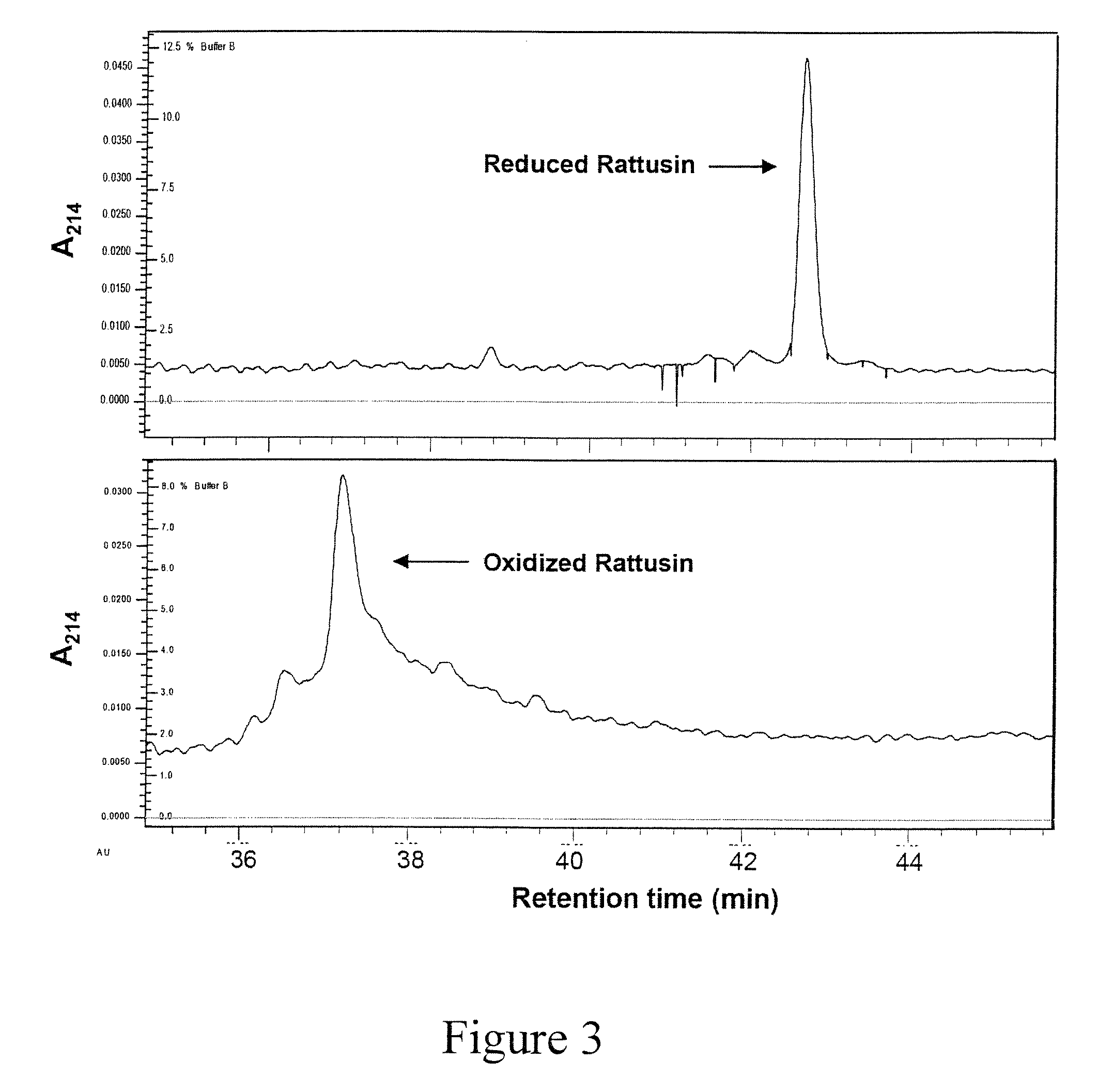Anti-microbial defensin-related peptides and methods of use
a technology of anti-microbial defensin and related peptides, which is applied in the field of new, non-toxic antimicrobial peptides, can solve the problem that the functional characterization of defa-rs1 was not provided in that publication, and achieve the effect of fast killing activity and potent
- Summary
- Abstract
- Description
- Claims
- Application Information
AI Technical Summary
Benefits of technology
Problems solved by technology
Method used
Image
Examples
example 1
Characterization of Rattusin
[0046]The emergence of antibiotic-resistant pathogens has become a major health crisis worldwide (1, 2). Novel antimicrobial drugs against resistant microbes are urgently needed. Defensins, an essential component of the innate immune system, are capable of killing a broad spectrum of bacteria through membrane permeabilization. These peptides initially interact with negatively charged phospholipids through electrostatic interaction leading to subsequent cell membrane depolarization and disruption leading to cell death (3, 4). The physical mechanism of action ensures that they act on a broad spectrum of bacteria (including antibiotic-resistant strains), with an extremely low risk of developing resistance by bacteria. Therefore, defensins represent attractive antibacterial drug candidates particularly against resistant bacteria.
[0047]Defensins are ubiquitously present in plants, fungi, insects, and vertebrate animals, including humans (3-8). In vertebrates, ...
example 2
Rational Design of Rattusin Analogs
[0125]Preliminary studies with rattusin revealed that the reduced peptide showed similar antibacterial efficacy to the refolded form in low concentrations of salt, but lost significant activities in high salt (data not shown), suggesting that the presence of disulfide bonds and intact β-sheet structure are critical in maintaining the salt-independent activity. Similar to several α- and β-defensins (49-52), the central cysteine-rich motif of rattusin is flanked by long flexible N- and C-terminal tails, which are primarily composed of charged and uncharged polar residues (Table 2). The impact of N- and C-terminal tails and five cysteines of rattusin on its antibacterial, cytotoxic, chemotactic, and immuno-modulatory functions is investigated.
Generation of Deletion Variants of Rattusin.
[0126]The long N- and C-terminal tails are sequentially deleted to reveal their functional relevance (Table 2). Based on the results obtained, partial gradual deletions...
PUM
| Property | Measurement | Unit |
|---|---|---|
| retention time | aaaaa | aaaaa |
| pH | aaaaa | aaaaa |
| pH | aaaaa | aaaaa |
Abstract
Description
Claims
Application Information
 Login to View More
Login to View More - R&D
- Intellectual Property
- Life Sciences
- Materials
- Tech Scout
- Unparalleled Data Quality
- Higher Quality Content
- 60% Fewer Hallucinations
Browse by: Latest US Patents, China's latest patents, Technical Efficacy Thesaurus, Application Domain, Technology Topic, Popular Technical Reports.
© 2025 PatSnap. All rights reserved.Legal|Privacy policy|Modern Slavery Act Transparency Statement|Sitemap|About US| Contact US: help@patsnap.com



